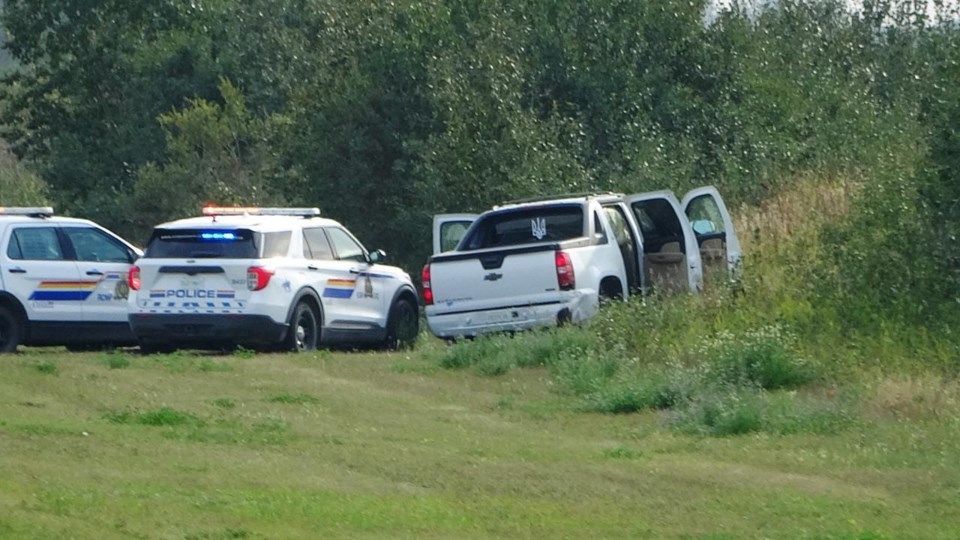SASKATOON — A technology used by a specialized RCMP team to search for people in high-risk situations was not immediately available as Mounties responded to a stabbing rampage and the hunt for a mass killer in Saskatchewan because it was held up under the federal procurement process.
Documents obtained under freedom of information laws show Ottawa’s Emergency Response Team-Special Activities Group, also known as ERT-SAG, was initially offered to help as Mounties responded to the stabbing attacks on the James Smith Cree Nation and in the nearby village of Weldon on Sept. 4, 2022.
Chaos descended on the community as Myles Sanderson, 32, moved from home to home, busting down doors and attacking people. Eleven were killed and 17 were injured.
Sanderson was arrested four days later and died in police custody.
Emails between Assistant Commissioner Rhonda Blackmore, the commanding officer of the Saskatchewan RCMP, and other high-ranking Mounties show officers were working to catch up to Sanderson’s erratic movements.
His brother, Damien Sanderson, was also considered a suspect at the time but was later found to be one of the victims.
“The two males are mobile in a stolen vehicle, but we have no idea where they are or where they might be headed,” Blackmore wrote to her colleagues.
A few hours after the killings began, Dennis Daly, who was then in charge of contract and Indigenous policing, emailed Blackmore about getting ERT-SAG out of Ottawa to aid Saskatchewan Mounties. Daly is now commanding officer of the Nova Scotia RCMP.
The team would have joined RCMP resources from Saskatchewan, including a regional critical response team deployed early that morning as the extent of the rampage became clear.
ERT-SAG offers tactical responses during critical incidents, RCMP said in an email. It can provide specialized support to local detachments and has access to specific resources and tactics.
Blackmore did not provide details on ERT-SAG when asked in an interview last month. On Friday, she said the SAG acronym is in reference to a separate "technical capability" specially trained officers use to locate people.
Later on the morning of the killings, Deputy Commissioner Brian Brennan emailed colleagues, including then-RCMP commissioner Brenda Lucki, with an update on the situation in Saskatchewan.
“We are engaged with Rhonda to ascertain if there is anything we can assist them with from a (national headquarters) perspective,” Brennan wrote.
“As mentioned before, we are exploring the deployment of SAG.”
Not long after, Blackmore wrote in an email that they would not be available. At the time, Mounties were aware that there were at least nine people dead, 16 crime scenes and a killer on the loose in a stolen vehicle.
“Dennis had offered SAG but it is not available as they are apparently in between contracts,” Blackmore wrote.
Neither RCMP headquarters nor Blackmore provided information on the contract when asked last month. Blackmore said Friday the SAG technology needed a new contract but was still in the procurement process.
"Sometimes procurement processes don't necessarily run as smoothly as predicted," Blackmore said.
She said "recognizing the gravity of the situation in Saskatchewan," the procurement was expediated. But she did not say when it was deployed.
RCMP headquarters said in an email that ERT-SAG was at some point deployed to Saskatchewan in response to the killings. But Mounties would not provide information on when the group arrived or how long it was delayed.
Blackmore added Friday that ERT-SAG was not directly involved in Sanderson's arrest.
The National Police Federation, the union that represents RCMP officers, said there was no collective bargaining underway at that time. It said in a statement it would not "compromise public safety over bargaining."
James Smith Cree Nation Chief Wally Burns said he still gets emotional looking back on the mass killing.
It would be a travesty if any delay in resources could have stopped the killer from moving around the community and province, he said, adding even a few hours was crucial.
“Time is of the essence,” Burns said.
Days of not knowing where Sanderson was has left the community with ongoing trauma and fear, the chief said. Catching him sooner could have made a difference, he added.
Blackmore noted that the RCMP received “quite a significant amount of resources” from detachments across the country after the rampage.
An internal RCMP email, sent after Sanderson was taken into custody, said more than 160 Saskatchewan, Manitoba, Alberta and Ontario RCMP and municipal partner agency employees worked non-stop during the manhunt. A critical incident command centre was set up outside the First Nation’s band office and a regional RCMP emergency response team was deployed.
Blackmore also said the province received air support help from RCMP in Alberta and Ontario.
An email to staff from Lucki after the killer’s capture thanked officers in Saskatchewan and those sent from other divisions for their tireless work.
“It takes incredible sacrifice, courage and skill to keep Canadians safe day in and day out, and I thank you for your commitment to the RCMP and to Canadians.”
This report by The Canadian Press was first published Sept. 15, 2023.
— With files from Jeremy Simes in Regina
Kelly Geraldine Malone, The Canadian Press




